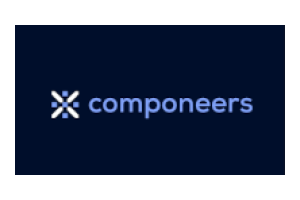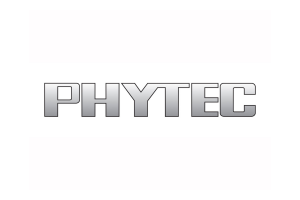Interview with Adam White, Infineon
“We want to drive decarbonization and digitalization”
Since June 2022, Adam White is heading the Infineon division Power & Sensor Systems (PSS). Markt&Technik asked him why Infineon is uniquely positioned to drive decarbonization and digitalization, how he will develop the division, and why Infineon should become more ambitious.
Markt&Technik: “Driving Decarbonization and Digitalization. Together.” This is the main claim for Infineon’s electronica stand. Why?
Adam White: Decarbonization and digitalization are the megatrends we at Infineon are targeting with our systems and products. And the third term “together” includes at least two aspects. The first one is that decarbonization and digitalization go hand in hand.
Digitalization is all about sensing the environment, putting systems into sleep mode when they are not needed. Let me give you an example. If we can monitor for example every room in an office building, we can shut down the lights in areas not occupied and can put the air-conditioning in idle mode and so on. And by saving energy, we leverage decarbonization.
Another example: There is a significant number of people that turn on their big flat screen TVs at home in the morning and let it run all day while they are doing their daily routine. With a built-in presence sensor, we can turn off the screen to save energy when no one is in front of it and turn it on again when someone enters the room.
And what is the second aspect of “together”?
It means that we are working closely together with lead customers on these megatrends.
With billions of smart sensors in connected buildings and homes, privacy and intimacy are under constant threat. What is Infineon doing that all these connected devices don’t serve as an open door for bad people?
There are two key elements when it comes to privacy and intimacy. First, you have to make sure that the smart device doesn’t serve as backdoor for individuals you don’t want to have in your house. And second, you have to make sure that devices like robot vacuum cleaners are not entering rooms they should not enter, or smart TVs do not capture what you are doing in front of it. Therefore, Infineon uses radar technology instead of optical cameras for such application. Radar sensors provide the data the system needs to do its job but not to collect any data that could be misused.
Coming back to the megatrends, Infineon is well positioned with all the three relevant power semiconductor materials under one roof. Although silicon carbide and gallium nitride are gaining traction, Infineon has announced a 5-billion-euro investment for a new wafer fab in Dresden for silicon devices. For me, this sounds a little bit strange.
We at Infineon strongly believe that silicon still has a lot of potential for the future. This new fab will not exclusively manufacture silicon MOSFETs and IGBTs, but also mixed-signal and power-management devices. This is different with the 300-mm-fab in Villach which is exclusively dedicated to power semiconductors.
But you are right to say that the market for silicon carbide and gallium nitride is growing fast, actually faster than we expected. We see SiC MOSFETs more as some sort of drop-in replacement for silicon MOSFETs or IGBTs as these devices have a similar behaviour. But for gallium nitride, we see that our customers still must go through a learning curve to unleash the full potential of this technology. It is our mission to educate them in this regard. Therefore, we have to collect a lot of application know-how ourselves and must be open-minded to novel topologies and techniques. Only if we do so, we will be able support our customers to implement these topologies which were not feasible with silicon devices and add value.
What is doing Infineon with respect to the monolithic integration of more functionality onto GaN devices?
Today, we have discrete devices, but we are working on a monolithic integration of more functionality. On the other hand, the multi-chip approach in our half-bridge components CoolGaN IPS is also interesting. In these devices we co-package two discrete 650-volt-GoolGaN transistors – one high-side switch and one low-side switch – with a silicon CMOS chip which is performing the driving and the safety functions as well as the level shift and dead-time control.
The Infineon division you are running since a few months is named Power & Sensor Systems. And you emphasise the term “systems”. Why?
Since our former CEO Dr Reinhard Ploss, and with our current CEO Jochen Hanebeck even more, we focus on the “From Products to Systems” approach. It’s not enough to put a device onto the table of the engineers. We must understand their challenges at the system level to provide him with the best solution for his challenges and add value.
To achieve this, we have to make sure that we can provide our customers all the building blocks for his system – like in a one-stop shop. This starts with the sensors to collect the relevant data for running a system. The next building block is the microcontroller and the memory to compute this information. We have a long legacy with the Cypress devices and even more capable MCUs. Then, there are the actuators which need power management and driver ICs as well as power semiconductors to run these systems safely. And ultimately, there is connectivity and the security element to connect these systems securely to the internet. Together – and here the "together" from our claim looms again –, these building blocks form a smart system which is working well in a connected, more electrified world which helps to decarbonize society and adds value to the customer.
What does this mean when it comes to the semiconductor material and device technology?
This means that we can be agnostic from the viewpoint of the semiconductor material and device technology. If we focus on the customer's challenge and choose the most suitable topology, the best fitting semiconductor material and device technology will result by itself, no matter if it is silicon, silicon carbide or gallium nitride. We do not have to stick to one semiconductor material or device technology, because we have them all. This makes Infineon so different to many competitors.
Andreas Urschitz has been promoted to Chief Marketing Officer at Infineon, and you have taken over from him as Division President PSS. What do you want to continue what he started, and what do you want to further evolve?
Since I joined Infineon in 2014 through the acquisition of International Rectifier, I was closely working with Andreas to develop our strategy. Let me divide this into two sections – the what and the how.
First, let's talk about the “what”. Infineon has a long heritage in components, but to remain relevant to our customers and add value on the system level, we have to gather system knowledge. Thus, we collaborate with lead customers on the system level to better understand their challenges. By that, they help us to shape our own product and solution roadmap for a win-win or, as I call it, “Win with the winners”.
A second point is that I want to make sure that we are not too focussed on ourselves but look ahead on our journey to drive decarbonization and digitalization. This helps us at Infineon to remain open-minded for novel solutions and to assign our energy and our very talented people to the right and relevant topics.
Now let’s talk about the “how”. I want this division to be a little bit more ambitious.
What do you exactly mean by being more ambitious?
In the past, Infineon was too conservative in my point of view. We want to show our innovations to our key customers a little bit earlier. We want to drive decarbonization and digitalization rather than being a fast follower. On top of that, our team is willing to take more responsibility, make decisions and execute these.
Many thanks for your time.
The interview was conducted by Ralf Higgelke.










